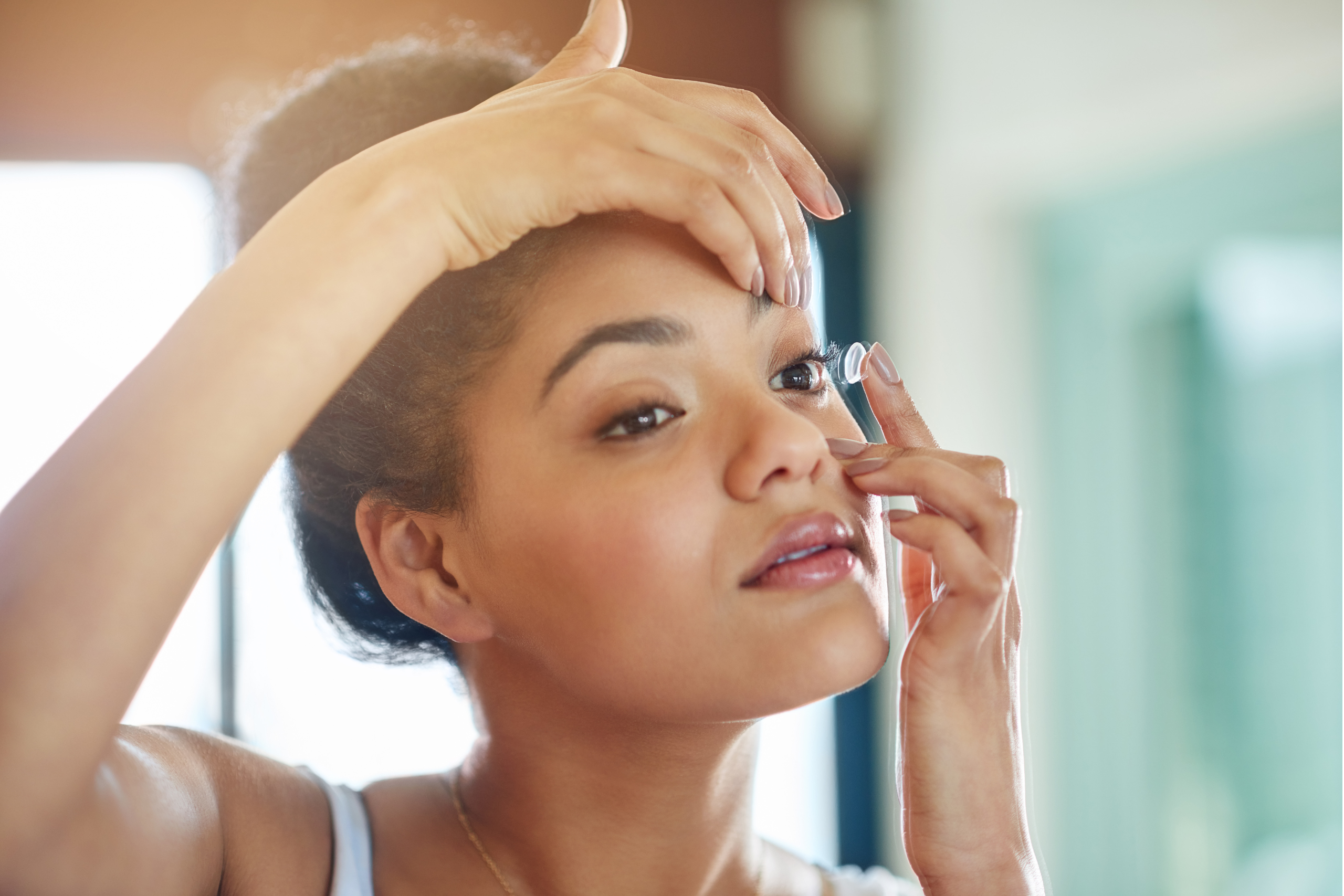The newest improvements in vision technology have a lot to offer. Here’s what you should know.
Glasses are such a common fixture for many of us that it can be hard to think of them as a developing technology. And yet, each year the eyewear industry unveils improvements that allow glasses and contacts to better meet the needs of their wearers in ways that are sometimes subtle and sometimes bold.
For eyewear purchasers, knowing the latest options in lens technologies can help them find glasses and contacts that better match their preferences and lifestyles. Some new lenses can even help treat vision problems or prevent them from growing worse. There’s a lot to be excited about with these new products, so let’s dive in.
1. Digitally surfaced lenses.
Traditional lenses are marked, cut, and polished by a lab technician using special tools in a highly labor-intensive process with results that are accurate to within 1/10th of a diopter. Digitally surfaced lenses rely on computer-guided systems, which use diamond-point lathe cutters to shape and polish lenses to within 1/100th of a diopter. The increased accuracy leads to high-definition results that can be fine-tuned to an individual’s prescription.
2. High-index lenses.
While standard lenses are made from thicker polycarbonate, high-index lenses are made from material that is able to bend light more. As a result, the lenses made from this material are thinner and lighter, making them more comfortable and aesthetically pleasing for those with strong prescriptions. While high-index lenses are more expensive than the standard polycarbonate variety, those with prescriptions of ±4.0 will probably find the investment worthwhile.
3. Anti-myopia lenses.
Myopia (nearsightedness) among children is growing at an astonishing rate. In fact, it’s estimated that by 2050, half the world’s population will be myopic, a condition they will have developed between the ages of eight and fifteen. Happily, at that age, there’s still time for an intervention.
So far, at least two companies have developed glasses that can slow the onset and progression of myopia by changing the way light enters the eye. This solution also helps slow axial elongation, which is the change in shape of the eye that causes nearsightedness to grow worse.
Anti-myopia contacts are also available, but these operate a little differently. While they, too, change the direction of light, they also help to reform the surface of the eyeball to help it take on a healthier shape. The results are temporary at first, but will last with regular use.
4. Light-filtering lenses.
If your eyes are sensitive to glare, many glasses now come with clear antireflective coatings to cut down on the effects of bright, reflective light on the eyes. Polarized lenses can achieve the same results, and may be a good idea for anyone who spends a lot of time in extremely reflective environments, such as on the water or near snow.
Before we move on, a word about blue-light lenses. Despite the hype, the American Academy of Ophthalmology has reported that they have not been able to find evidence that blue light (the kind produced by computer screens) damages the eyes, and they do not recommend them. Instead, they suggest taking regular breaks from your screen, keeping your screen about an arm’s length from your face, and adjusting your room lighting and screen settings if needed.
5. High-speed transitional lenses.
When they were first introduced, transitional lenses seemed like a miracle solution for anyone who didn’t want to be bothered switching between their sunglasses and prescription lenses. However, users quickly found a downside: while transitional lenses only take thirty to thirty-five seconds to grow dark, they take several minutes for the darkness to fade.
Modern transitional lenses are getting faster, however, and have reduced the transition time by several minutes. While this may not be fast enough for some, the improvements in this area are worth keeping an eye on!
The future of lens technology: Smart contacts? Augmented reality?
As exciting as these new advances are, products currently under development could have broad ramifications for medical treatments and society as a whole. For instance, smart contact lenses might someday be able to display digital information on a wearer’s eye, just like in the movies. But a much more near-future possibility is that contacts will be able to monitor health signs through the eye and deliver treatments as needed.
For instance, contacts are currently being developed that could measure eye pressure—a warning sign for glaucoma—and either administer a treatment or notify a doctor if warning signs are detected. Contacts might soon also be able to measure blood sugar for diabetes patients, treat eye allergies, or track vitamin deficiencies. Color-correcting lenses for those with color blindness are also under development.
Ask your vision provider about which eyewear solutions are right for you.
As with many new technologies, the reality doesn’t always live up to the hype. It’s wonderful that eyewear companies are searching for solutions to screen fatigue, even if blue-filter lenses aren’t the way. And while many of the high-tech contact lenses sound like science fiction for now, maybe someday soon they’ll be as common as transitional, light-adaptive lenses are today.
For now, the best thing to do is to talk to your eye doctor at your next scheduled appointment. Ask about any of the new technologies that have caught your interest, and follow their guidance.

